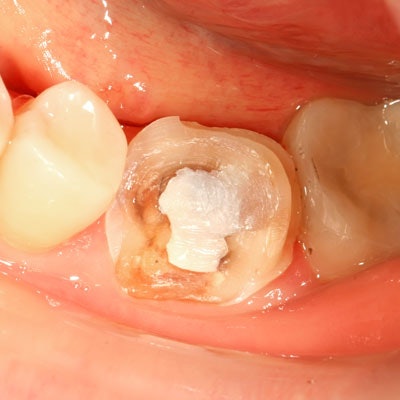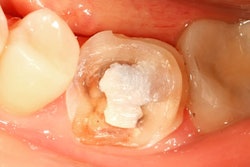
Why do fillings fail, and does the type of material used matter? A new study found similar results with composite resin and amalgam but that smoking tobacco and drinking alcohol, as well as genetics, may affect success. These findings suggest that genetics could be used to personalize treatment in the future.
The researchers investigated the five-year success of both types of fillings in patients and if genetic variation was related to composite resin filling failure (Frontiers in Medicine, November 6, 2017).
"Extensive dental composite resin fillings are more prone to fail if the patient smokes or drinks," lead study author Alexandre Vieira, DDS, PhD, told DrBicuspid.com. "In addition, independent of these exposures, genetic variation also can increase the chance of someone having extensive dental fillings in composite that may fail."
Dr. Vieira is a professor, the director of clinical research, and the director of student research at the University of Pittsburgh School of Dental Medicine in Pennsylvania.
Personalized results
Questions persist about the survival and performance of composites compared with amalgam, with some research showing that large composite restorations survive longer in individuals with low disease risk, while amalgam lasts longer in high-risk patients.
Therefore, the researchers used the University of Pittsburgh School of Dental Medicine Dental Registry and DNA Repository project to investigate the performance of amalgams versus composite resin in extensive posterior restorations. The registry includes dental records and saliva samples, which served as the source of DNA for the current study, for patients treated at the dental school since September 2006 and who elected to participate in the databases.
“Extensive dental composite resin fillings are more prone to fail if the patient smokes or drinks.”
The researchers looked at records for 807 patients over a 10-year period with a total of 6,266 amalgam and 2,010 composite restorations. They also examined records of 253 patients with at least one complex restoration of anterior teeth that involved four or more surfaces (443 restorations). They defined restoration failure as the necessity of replacement due to fracture, discoloration in the case of composites, or development of secondary caries.
In the second group, the authors sought to determine if risk factors, such as age, sex, smoking tobacco, drinking alcohol, diabetes status, and periodontal health status, affected the failure of direct composite restoration in anterior teeth.
Additionally, they investigated whether genetic variation in specific matrix metalloproteinase (MMP) genes is overrepresented in cases of failed composite resin restorations, hypothesizing that having specific MMP alleles increases degradation of collagen fibrils at the bonded interfaces of resin and dentin.
The researchers studied 92 unrelated individuals in the database with a failed composite resin in anterior or posterior teeth with whom they matched 92 unrelated individuals by age, sex, ethnicity, tobacco smoking, alcohol drinking, diabetes, and periodontal health.
They found that amalgam and composite restoration failure rates were similar among the 807 patients, but composites performed slightly better than amalgam at five years.
| Percentage of dental restorations that failed | |||
| Amalgam | Composite | p-value | |
| Up to 1 year | 9.76% | 9.85% | p = 0.08 |
| 1 to 2 years | 2.14% | 2.88% | p = 0.38 |
| 2 to 5 years | 3.24% | 1.19% | p = 0.0000001 |
Among the 443 extensive direct composite resin restorations in anterior teeth studied, 41 (9%) failed.
| Main reasons for failure of extensive direct composite restorations in anterior teeth | |
| Failure reason | No. failed |
| Secondary caries | 19 |
| Extraction due to reasons other than caries or fracture | 11 |
| Aesthetic issues | 7 |
| Fracture | 4 |
Failures occurred more frequently in males who smoked tobacco (p = 0.05) and were five times more common in the maxilla among those who did not smoke tobacco. Drinking alcohol increased the failure rate within two years (p = 0.03).
"We argue that the mechanism underlying this result relates to the fact that smoking tobacco alters salivation, since we found that the higher failure rates of anterior maxillary restorations in the cases when individuals did not smoke equalized with anterior mandibular restoration failures when the patient smoked tobacco," the authors wrote.
Additionally, they found a statistically significant association between MMP2 rs9923304 and composite restoration failure (p = 0.007). The results also emphasized that composites perform similarly to amalgams.
"Dental amalgams may be a hazardous material for the environment, which is a position many countries in Europe have taken," Dr. Vieira told DrBicuspid.com. "The choice is about avoiding a potential environmental hazard since it appears there is a reasonable replacement."
Not so fast
However, the authors advised that their results be viewed with caution and that they require more testing with larger and more homogeneous samples. To that end, the resesearchers are continuing to conduct research on this topic and the personalization of treatment.
"We are hoping to demonstrate how genomic information can be a useful tool for the management of cases in a general dentist practice," Dr. Vieira said.



















